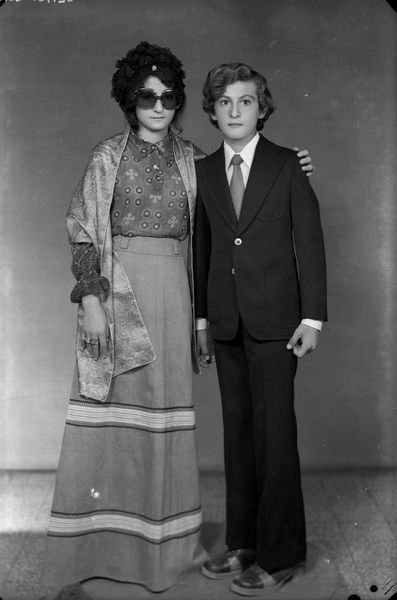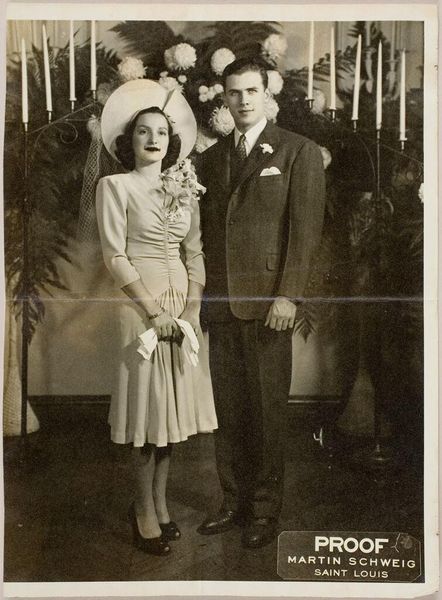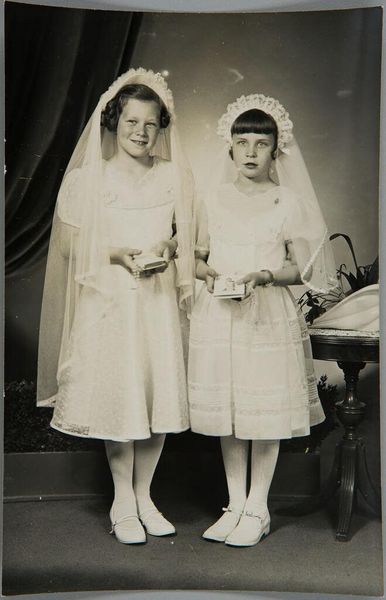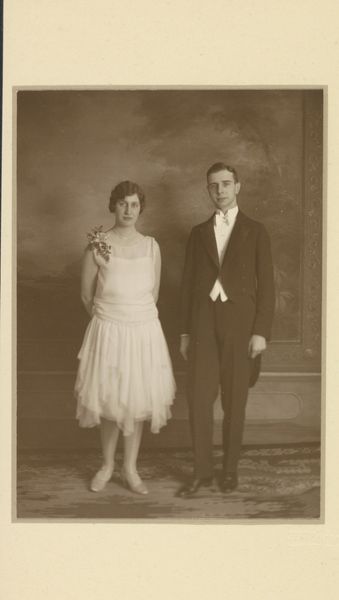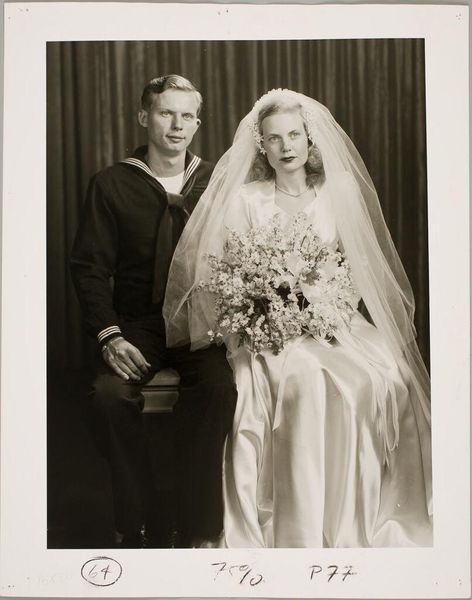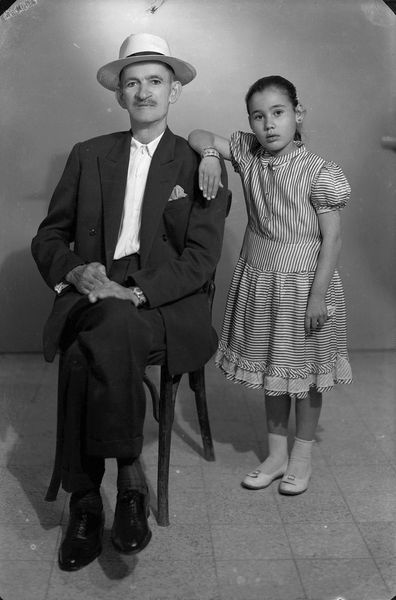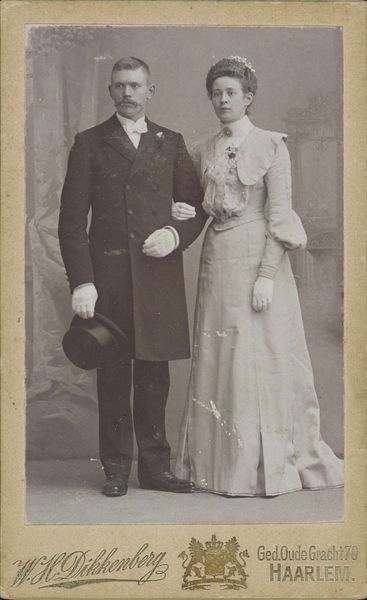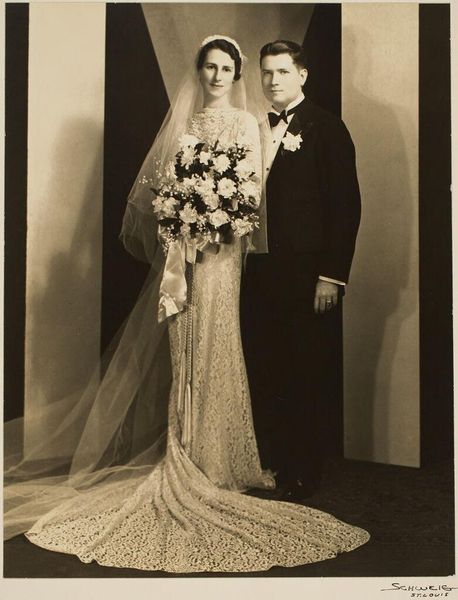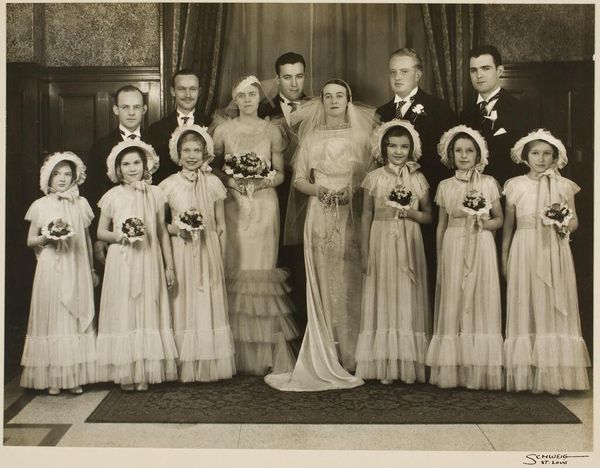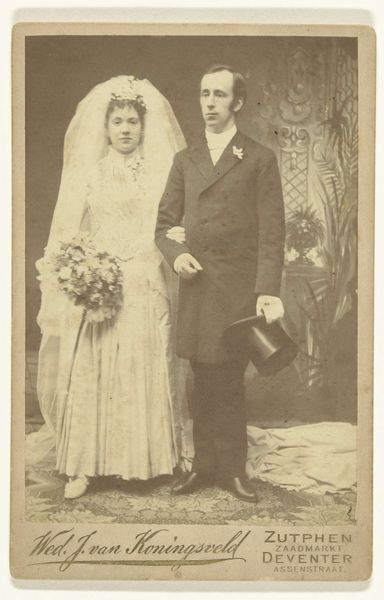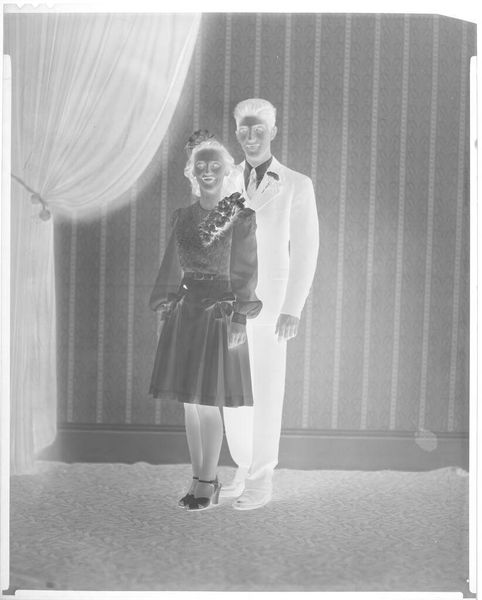
Palestinian couple from Ain El Helweh. Studio Shehrazade, Saida, Lebanon, 1973-74. Hashem el Madani 2007
Dimensions: image: 391 x 265 mm
Copyright: © Akram Zaatari, courtesy Hashem el Madani and Arab Image Foundation, Beirut | CC-BY-NC-ND 4.0 DEED, Photo: Tate
Curator: This black and white photograph, "Palestinian couple from Ain El Helweh," was taken between 1973 and 1974 at Studio Shehrazade in Saida, Lebanon, and the images were preserved by Akram Zaatari. Look at the texture of those patterned trousers. Editor: They look so solemn, though! The stark studio backdrop, their formal attire... It speaks of a very particular social moment for Palestinians, especially those displaced in refugee camps like Ain El Helweh. Curator: Exactly. The materials and studio setting—the backdrop, the lighting—provided a very specific, almost ritualized, space. It allowed for the construction of a carefully presented identity. Editor: Which contrasts sharply with the reality of refugee life, doesn't it? Consider the power dynamics: the photographer, the subjects, and the image itself becoming a potent symbol. Curator: Absolutely. The photograph becomes a commodity, a document, a means of preserving memory and constructing identity amidst displacement and, ultimately, consumption. Editor: Yes, and it offers insights into the ways the Palestinian diaspora chose to represent themselves, challenging stereotypes and asserting their presence in a rapidly changing world. Curator: Precisely. It's fascinating how a seemingly simple studio portrait can reveal such layers of meaning and historical context through the materials and the process of its making. Editor: Indeed, a powerful image that resonates far beyond its surface. It's a testament to resilience, identity, and the complexities of displacement.
Comments
http://www.tate.org.uk/art/artworks/zaatari-palestinian-couple-from-ain-el-helweh-studio-shehrazade-saida-lebanon-1973-74-p79451
Join the conversation
Join millions of artists and users on Artera today and experience the ultimate creative platform.
“Wedding pictures were taken the week following the ceremony. The women would bring their wedding dresses along with them and I would provide plastic flower bouquets and white gloves. In general, these photographs were intended for enlargement so I would shoot wedding photographs on 4 × 5 inch negatives.” Gallery label, June 2011
